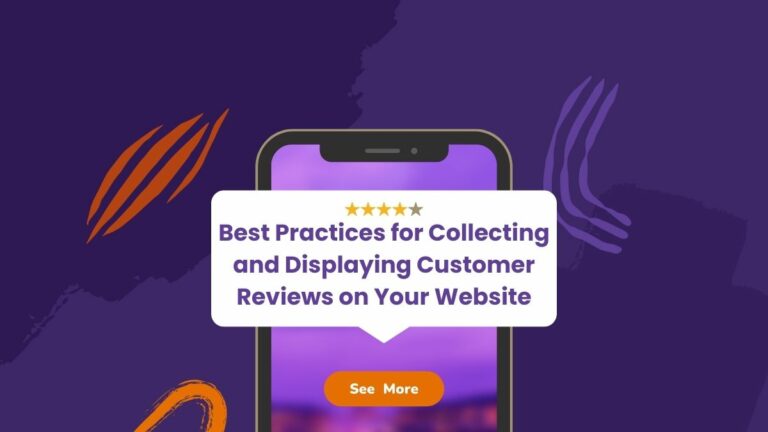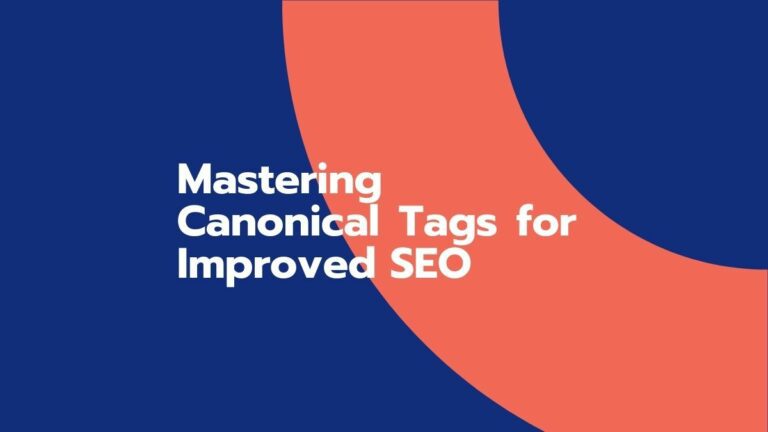
Use Social Media Stories to Provide SEO Content and Improve Engagement
Social media has become integral to our daily lives in today’s digital landscape. With the rise of platforms like Instagram, Facebook, and Snapchat, people are now consuming content through a new, engaging format called “stories.” These temporary, bite-sized visual narratives have transformed how we interact with social media, and they offer a unique opportunity for brands to captivate audiences and enhance their online presence.
At the same time, search engine optimization (SEO) has become a critical element in driving organic traffic and boosting visibility on the web. By optimizing website content, businesses aim to appear higher in search engine rankings and attract more relevant visitors. But did you know that social media stories can significantly improve SEO content and drive engagement? This article will explore the connection between social media stories and SEO, providing actionable strategies and insights to leverage their potential.
Understanding Social Media Stories
Defining Social Media Stories
Social media stories are brief, immersive content experiences that combine images, videos, text overlays, and interactive elements. They appear at the top of users’ feeds and disappear after 24 hours. Snapchat popularized the format and was later adopted by other platforms like Instagram, Facebook, and WhatsApp.
Popular Platforms for Stories
Instagram Stories is one of the most popular platforms for sharing stories, with over a billion active users. Facebook Stories, Snapchat Stories, and WhatsApp Status offer similar features and cater to diverse audiences. As a brand, it is crucial to understand which platforms resonate with your target audience to maximize the impact of your story-based content.
Key Features and Benefits of Stories
Social media stories offer several distinct advantages for brands:
- Fleeting FOMO (Fear of Missing Out): Stories create a sense of urgency and exclusivity due to their temporary nature, motivating users to engage and consume content promptly
- Immersive Visual Experience: Through captivating visuals, multimedia elements, and interactive features like polls and quizzes, stories provide a unique opportunity to immerse your audience in your brand’s narrative
- Greater Visibility: Stories appear prominently at the top of users’ feeds, increasing the likelihood of being noticed and interacted with by your followers
- Enhanced Authenticity: Stories offer a more informal and behind-the-scenes glimpse into your brand, enabling you to connect with your audience on a more personal level
Now that we understand the basics of social media stories let’s explore how they can impact SEO content and how you can leverage them to boost engagement.
The Connection between Social Media Stories and SEO Content
Social media stories and SEO are more intertwined than you might think. While levels may not directly impact your website’s search engine rankings, they can indirectly enhance your SEO efforts and drive more organic traffic. Here’s how:

The Impact of Stories on SEO Rankings
Engagement metrics, such as user interaction, time spent on your website, and the number of pages visited, are crucial signals that search engines consider when determining your website’s relevance and authority. By creating engaging stories, you can encourage users to visit your website, consume your content, and improve these metrics, thus positively influencing your SEO rankings.
Leveraging Stories for Improved Visibility
Social media platforms often prioritize stories in their algorithms, giving them prime real estate on users’ feeds. Therefore, regularly posting compelling stories can increase your brand’s visibility and ensure your content reaches a wider audience. The more people are exposed to your accounts, the greater the potential for increased website traffic and improved SEO performance.
Creating Story-based SEO Content
While stories primarily reside within the social media realm, you can strategically align them with your SEO content strategy. For example, consider incorporating elements from your blog posts, articles, or product pages into your stories. By providing a teaser or a glimpse into your longer-form content, you can pique users’ curiosity and drive them to explore more on your website. This approach drives engagement and directs users to relevant SEO-optimized content, further strengthening your website’s authority and visibility.
Now that we’ve established the connection between social media stories and SEO content let’s dive into the strategies for crafting engaging stories that resonate with your audience.
Crafting Engaging Social Media Stories
To create stories that capture your audience’s attention and drive engagement, follow these best practices:
Understanding Your Target Audience
Take the time to research and understand your target audience’s preferences, interests, and pain points. Then, tailor your stories to resonate with their needs and desires, ensuring that your content is relevant and valuable to them.
Utilizing Compelling Visuals and Multimedia
Visual storytelling is at the core of social media stories. Use high-quality images, videos, and graphics that are visually appealing, on-brand, and attention-grabbing. Incorporate multimedia elements such as animations, music, or sound effects to enhance the storytelling experience and leave a lasting impression.
Incorporating Storytelling Techniques
Compelling storytelling captivates the audience and evokes emotions. Craft narratives that stimulate curiosity, suspense, or humor. Use text overlays, captions, and swipe-up features to guide viewers through your story and encourage them to take action, such as visiting your website or engaging with your content.
By applying these techniques, you can create stories that captivate your audience and set the stage for optimizing them for improved SEO performance.
Optimizing Social Media Stories for SEO
While stories are primarily a visual medium, there are several ways you can optimize them to boost your SEO efforts:
Understanding Your Target Audience
Take the time to research and understand your target audience’s preferences, interests, and pain points. Then, tailor your stories to resonate with their needs and desires, ensuring that your content is relevant and valuable to them.
Utilizing Compelling Visuals and Multimedia
Visual storytelling is at the core of social media stories. Use high-quality images, videos, and graphics that are visually appealing, on-brand, and attention-grabbing. Incorporate multimedia elements such as animations, music, or sound effects to enhance the storytelling experience and leave a lasting impression.

Incorporating Storytelling Techniques
Compelling storytelling captivates the audience and evokes emotions. Craft narratives that stimulate curiosity, suspense, or humor. Use text overlays, captions, and swipe-up features to guide viewers through your story and encourage them to take action, such as visiting your website or engaging with your content.
By applying these techniques, you can create stories that captivate your audience and set the stage for optimizing them for improved SEO performance.
Optimizing Social Media Stories for SEO
While stories are primarily a visual medium, there are several ways you can optimize them to boost your SEO efforts:
Incorporating Relevant Keywords
Identify keywords relevant to your brand, products, or industry and naturally integrate them into your stories’ text overlays and captions. This helps search engines understand the context of your content and improves the chances of your stories appearing in relevant search results.
Using Hashtags Effectively
Hashtags categorize and organize content, making it discoverable to users interested in specific topics. Research popular and relevant hashtags in your niche and include them strategically in your story captions. This increases the visibility of your stories and exposes them to a broader audience.
Leveraging Geolocation and Tagging Features
Using geolocation tags to connect with local users if your business has a physical location or operates in specific regions. Additionally, label relevant accounts, such as influencers or partner brands, to expand your reach and engage with your followers. These geolocation and tagging features enhance the discoverability of your stories, driving more engagement and potentially attracting new followers and customers.
By optimizing your social media stories with these SEO techniques, you can amplify their impact and improve your brand’s online visibility.
Enhancing Engagement through Social Media Stories
Driving engagement is crucial to your social media stories’ success and overall digital marketing strategy. Here are some effective methods to boost engagement:

Encouraging User Interaction and Participation
Design interactive stories that encourage users to engage with your content. Use features like polls, quizzes, or sliders to gather your audience’s feedback, opinions, or preferences. Respond to user interactions and foster a sense of community and connection with your brand.
Running Contests and Giveaways with Your Brand
Leverage the interactive features of social media stories by running contests and giveaways. Encourage users to participate by asking them to share their stories featuring your brand or tagging their friends in your account. This increases engagement and generates user-generated content (UGC) that can be further utilized in your SEO strategy.
Leveraging Interactive Features
Take advantage of the various interactive features available in social media stories. For example, incorporate swipe-up links to drive traffic to specific landing pages on your website or direct users to relevant blog posts or product pages. Use stickers, GIFs, or emojis strategically to add a touch of fun and personality to your stories, making them more engaging and shareable.
By implementing these engagement-focused strategies, you can create a dynamic and interactive story experience that encourages your audience to participate and connect with your brand actively.
Measuring the Impact of Social Media Stories
To ensure the success of your story-driven SEO campaigns, it is essential to track and analyze the performance of your stories. Here are some key metrics and tools to help you measure their impact:
Analytics and Tracking Tools
Social media platforms provide built-in analytics tools that offer valuable insights into your story performance. Track metrics such as views tap forward and backward and swipe-up rates to gauge audience engagement. Use URL tracking parameters to measure the traffic and conversions generated from your story links.
Key Metrics to Assess Engagement
Evaluate engagement metrics such as story completion rate, exit rate, and the number of interactions (poll responses, quiz submissions, etc.). These metrics indicate how well your stories are capturing and retaining audience attention. Analyze the patterns and trends in engagement to refine your storytelling strategies further.
Iterating and Improving Based on Data
Regularly review and analyze the data collected from your stories. Identify patterns, trends, and areas for improvement. Then, use these insights to iterate and optimize your future story content, ensuring you continuously enhance engagement and maximize SEO impact.
By closely monitoring the performance of your social media stories, you can make data-driven decisions and fine-tune your strategies for optimal results.
Integrating Social Media Stories into Your Content Strategy
To fully leverage the power of social media stories, it is crucial to integrate them seamlessly into your overall content strategy. Here’s how you can do it effectively:
Aligning Stories with Overall Brand Messaging
Ensure your story content aligns with your brand’s values, voice, and messaging. Consistency across all your social media channels creates a cohesive brand experience and fosters brand recognition.
Planning and Scheduling Story Content
Develop a content calendar specifically for your social media stories. Plan and schedule your story content in advance, ensuring a consistent flow of engaging and relevant stories. Consider coordinating your story posts with other content releases or marketing campaigns to create synergy and reinforce your brand message.
Coordinating Stories with Other Social Media Channels
Maximize the impact of your stories by cross-promoting them on other social media channels. Share highlights or previews of your accounts on platforms like LinkedIn, Twitter or Facebook, driving traffic and engagement to your story content.
Integrating social media stories into your content strategy can amplify their reach, reinforce your brand messaging, and create a cohesive and engaging brand experience.

Best Practices for Using Social Media Stories
To maximize the impact of your social media stories, follow these best practices:
Consistency and Frequency of Posting
Maintain a consistent posting schedule to keep your audience engaged. Regularly update your stories with fresh and compelling content to stay top-of-mind with your followers—experiment with posting frequency to determine the optimal cadence that resonates with your audience.
Maintaining Authenticity and Transparency
Authenticity is critical to building trust and connecting with your audience. Be transparent about your brand’s values, goals, and behind-the-scenes processes. Then, engage with your audience authentically by responding to comments, questions, and feedback.
Monitoring and Responding to Audience Feedback
Pay attention to your audience’s response to your stories. Monitor comments, direct messages, and poll/quiz results. Take the time to respond to feedback and address any concerns or questions promptly. This interaction shows your commitment to customer satisfaction and helps foster a loyal community of followers.
Overcoming Challenges in Story-based SEO Content
While utilizing social media stories for SEO content can be highly effective, there are some challenges to navigate:
Avoiding Common Pitfalls
Ensure your stories are visually appealing, well-crafted, and aligned with your brand identity. Avoid excessive self-promotion or overt sales pitches, as these can deter engagement. Instead, focus on delivering valuable content and balancing promotional and organic storytelling.
Dealing with Algorithm Changes
Social media algorithms are dynamic and ever-evolving. Stay updated with platform changes and adapt your strategies accordingly. Keep an eye on algorithm updates that may impact the visibility or engagement of your stories, and adjust your approach to maintain optimal performance.
Staying Ahead of the Competition
As more brands recognize the power of social media stories, the competition for user attention becomes fiercer. Stay ahead by continuously innovating and experimenting with your storytelling techniques. Find unique ways to captivate your audience and differentiate your brand from competitors.
By proactively addressing these challenges, you can stay ahead of the game and ensure the success of your story-based SEO content.

Closing Notes
Social media stories have transformed the way brands engage with their audiences. By strategically incorporating story-based content into your SEO strategy, you can drive engagement, increase website traffic, and improve your search engine rankings. With the proper storytelling techniques, optimization strategies, and data-driven analysis, you can unlock the full potential of social media stories and propel your brand toward online success.
Digital Results would be happy to help you with your digital marketing needs. Get in touch for a free 30-minute consultation—one of our experts will walk through how we can help optimize your search engine optimization (SEO).
Ready to Grow Your Search Engine Results?
Let Digital Results assist you in your SEO strategy and help
deliver the search engine results you need.






